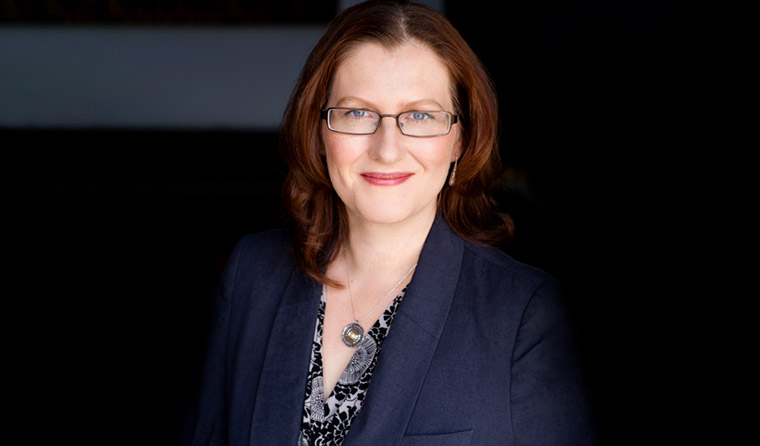News
Vaccine helps close the gap for cervical cancer rates
Research finds initial uptake of HPV vaccination among Aboriginal and Torres Strait Islander adolescents is over 80%.
 Eight in 10 Aboriginal and Torres Strait Islander adolescents have beee part of initial uptake of HPV vaccination.
Eight in 10 Aboriginal and Torres Strait Islander adolescents have beee part of initial uptake of HPV vaccination.
‘It’s definitely a good news story.’
That is Associate Professor Julia Brotherton, Medical Director of the VCS Foundation’s Population Health Services, in response to new research she led that found high human papillomavirus (HPV) vaccination rates in Aboriginal and Torres Strait Islander teenagers may help close the gap in cervical cancer rates.
‘This research is a great moment for us because it really represents more than a decade of work trying to improve the recording of Aboriginal and Torres Strait Islander status among our vaccinated students,’ she told newsGP.
According to Associate Professor Brotherton, when data was first being collected at the 2007 commencement of the national HPV program, ‘only around half’ of notifications reported whether the recipient identified as Aboriginal and Torres Strait Islander or non-Indigenous.
‘That was a very big problem because cervical cancer [rates] are more than double in Aboriginal and Torres Strait Islander women than in non-Indigenous women, so it’s really a priority to make sure the vaccine is hopefully going to help close that cancer gap,’ he said.
Associate Professor Brotherton’s research was published this week in the Medical Journal of Australia.
The research analysed data from adolescents who were 12 years old in 2015 and received the first dose of the quadrivalent three-dose HPV vaccination either that year, or the following year.
‘What we saw was that uptake of that first dose of vaccine is universally high. It was at 80% for all groups, whether they were Aboriginal and Torres Strait Islander or non-Indigenous, no matter which state they lived in, and whether they were male or female,’ Associate Professor Brotherton said.
‘So that’s incredibly exciting news.
‘The not-so-good news is that we did find, however, [that] Aboriginal and Torres Strait Islander students were less likely to finish the complete course.
‘We noticed that right across the country we saw lower completion of that third dose in our Aboriginal and Torres Strait Islander students.’
While Associate Professor Brotherton is unsure of the exact reason completion of the course was significantly lower than initial uptake, she speculates that the six-month gap between the first and third dose may have played a part.
‘So possibly issues like moving schools, or student absenteeism could have a bigger impact on our Aboriginal and Torres Strait Islander students than non-Indigenous,’ she said.
Logistical barriers may have also been an issue, as could finding culturally appropriate services to provide the vaccination.
‘So there’s definitely a need for more work in that space,’ she said.

‘This data is really encouraging,’ Associate Professor Julia Brotherton said of the new research.
Associate Professor Brotherton believes the fact the recommended HPV vaccine schedule is only two doses rather than three might help improve course completion.
‘But, of course, the two doses are now six months apart, so those challenges may be still continuing,’ she said.
Associate Professor Brotherton is planning research to address those concerns.
‘So we’re certainly going to be talking to Aboriginal and Torres Strait Islander students and parents to try and find out what those issues are in a piece of research that we’ve got planned,’ she said.
For now, the research is very promising.
‘I think this data is really, really encouraging,’ Associate Professor Brotherton said.
‘With screening, we’ve never been able to close that gap effectively despite trying really hard … and the vaccine impact data we’ve got suggests we’re seeing equal impacts for Aboriginal and Torres Strait Islander people as compared to non-Indigenous people, which is brilliant.’
Associate Professor Brotherton said new opportunities in the field of cervical screening, including self-collection of samples and longer intervals between screens, may further positively contribute to further improved health outcomes for Aboriginal and Torres Strait Islander women.
‘We’re hopeful that the combination of the HPV vaccination and new strategies we’ve got in screening can close the cervical cancer gap for Aboriginal and Torres Strait Islander people,’ she said.
To help close the gap, Associate Professor Brotherton encourages GPs to ask all adolescent patients about HPV vaccination.
‘I think the most important thing is to think of it, and ask the question,’ she said.
Now that the HPV vaccine is available free of charge to everyone up to the age of 19 years, there is a better opportunity than ever to ‘catch up’ young people.
‘Anecdotally, there are [also] people whose parents didn’t sign the consent form who are now super keen to be vaccinated, so it’s definitely worth having the conversation,’ Associate Professor Brotherton said.
The incidence of cervical cancer is currently more than twice as high for Aboriginal and Torres Strait Islander women than for non-Indigenous women, and the associated mortality is more than three times as high. HPV vaccination of more than 3.4 million people (at least one dose) was recorded by the National HPV Vaccination Program Register during 2007–17.
The proportion of HPV vaccine recipients who identified as Aboriginal and Torres Strait Islander increased from 2% in 2007 to 5% in 2017.
In 2018, the previous quadrivalent three-dose HPV vaccine was replaced by a nonavalent vaccine on a two-dose schedule, with doses given six months apart.
Aboriginal and Torres Strait Islander health cervical cancer HPV vaccination
newsGP weekly poll
As a GP, do you use any resources or visit a healthcare professional to support your own mental health and wellbeing?